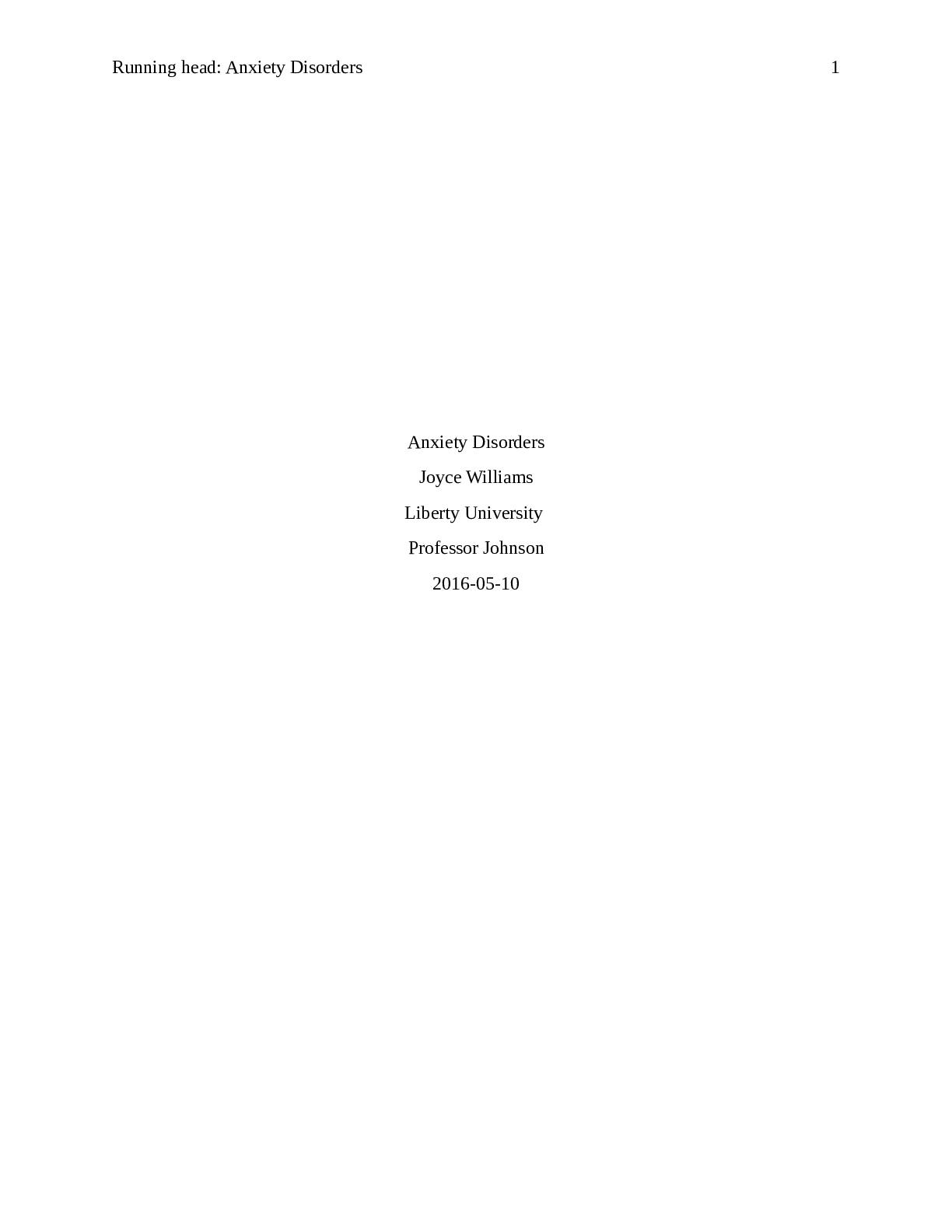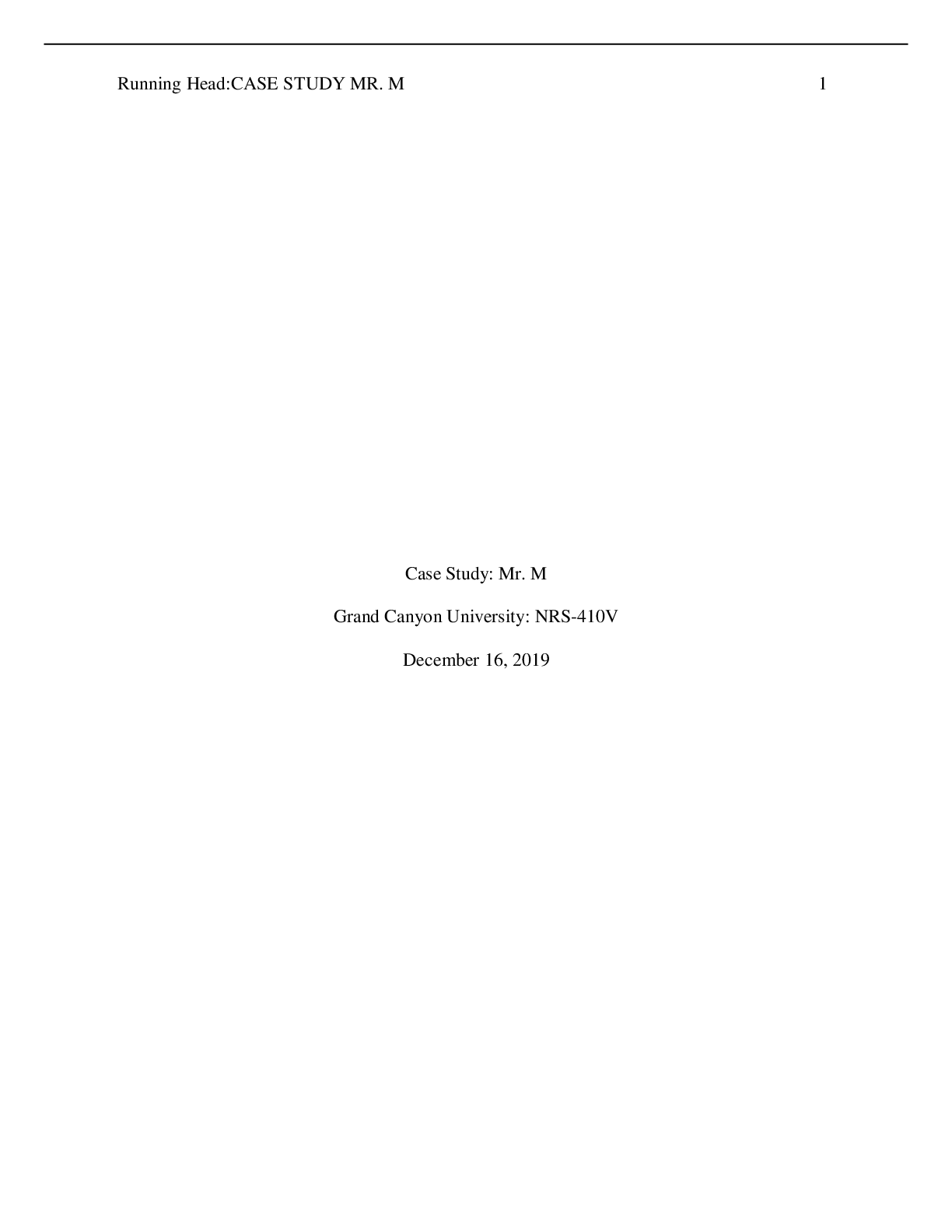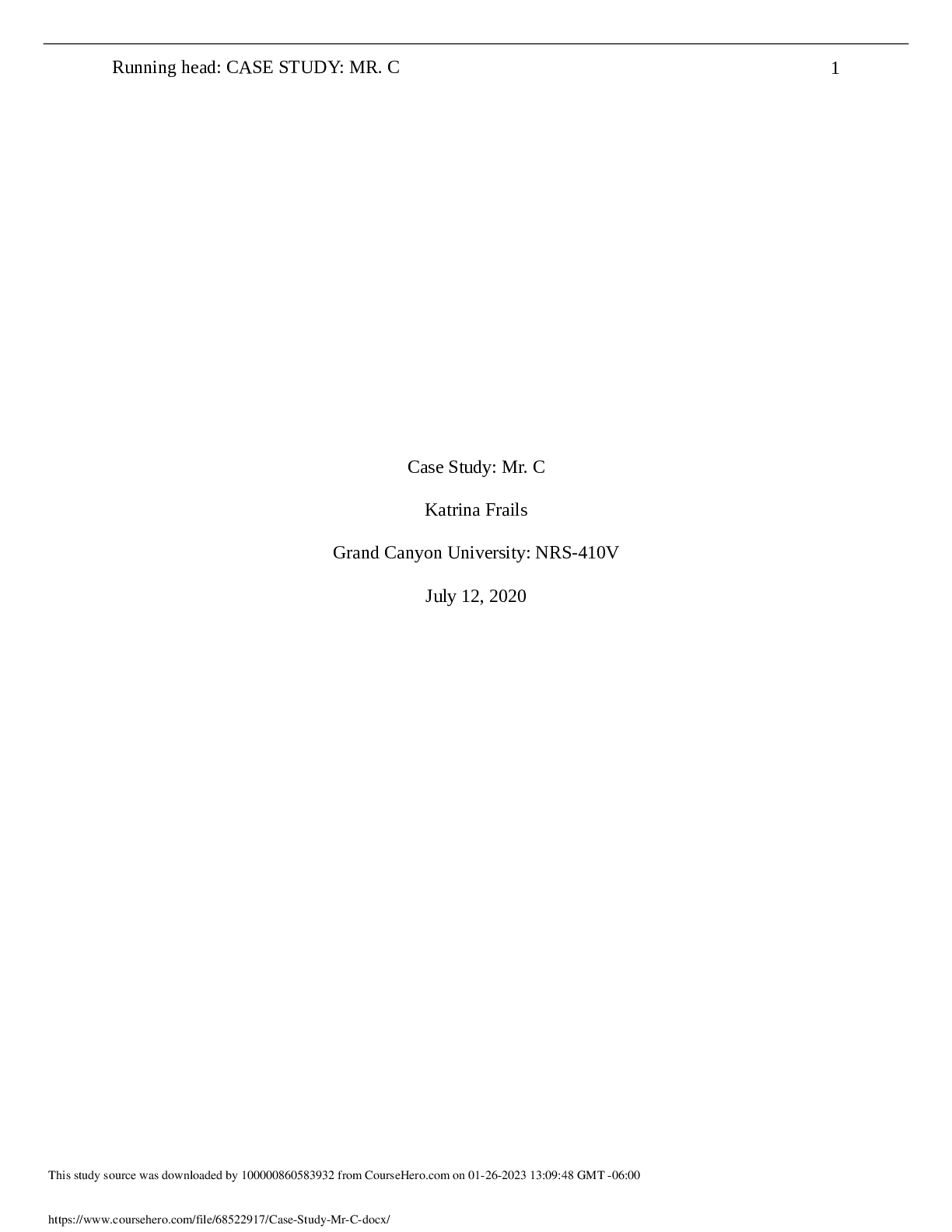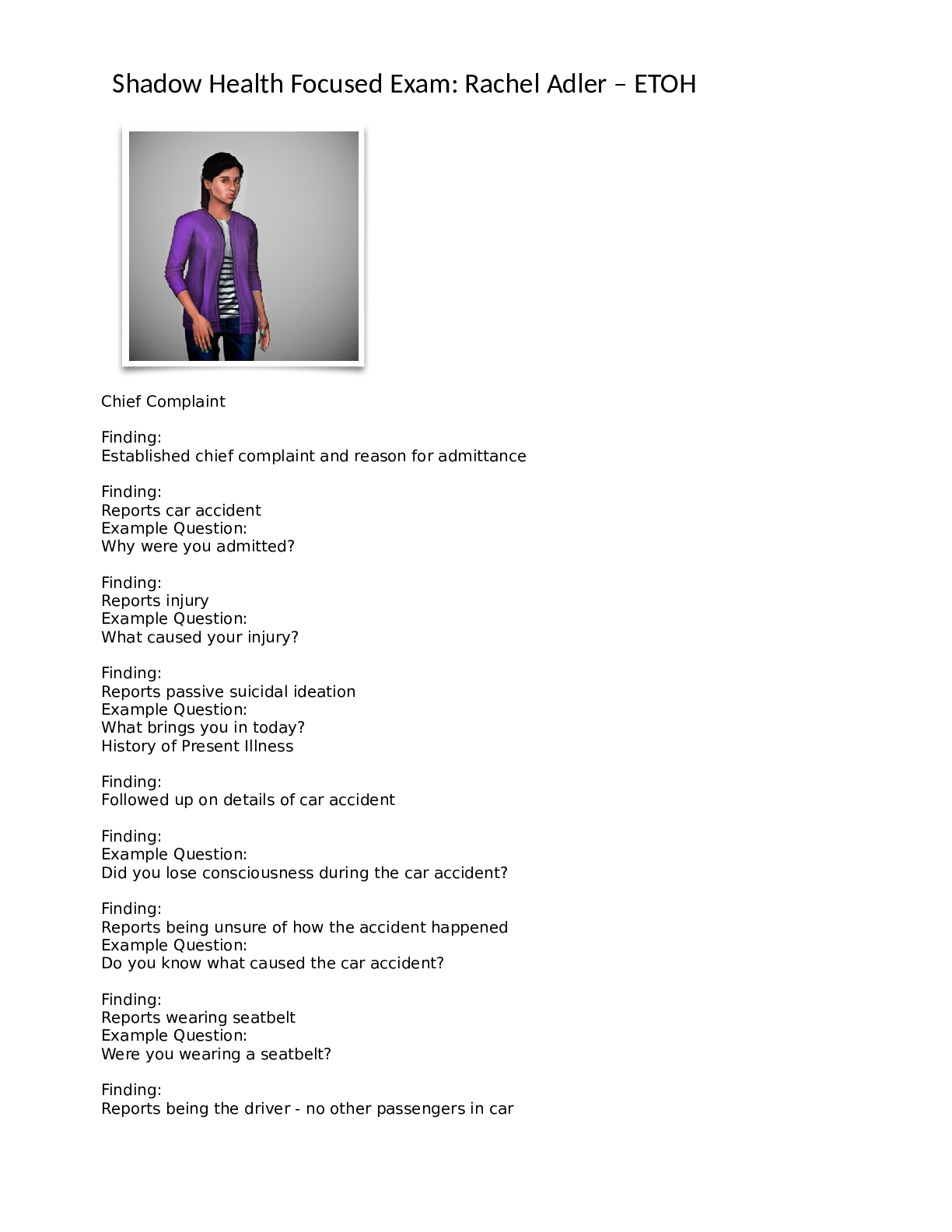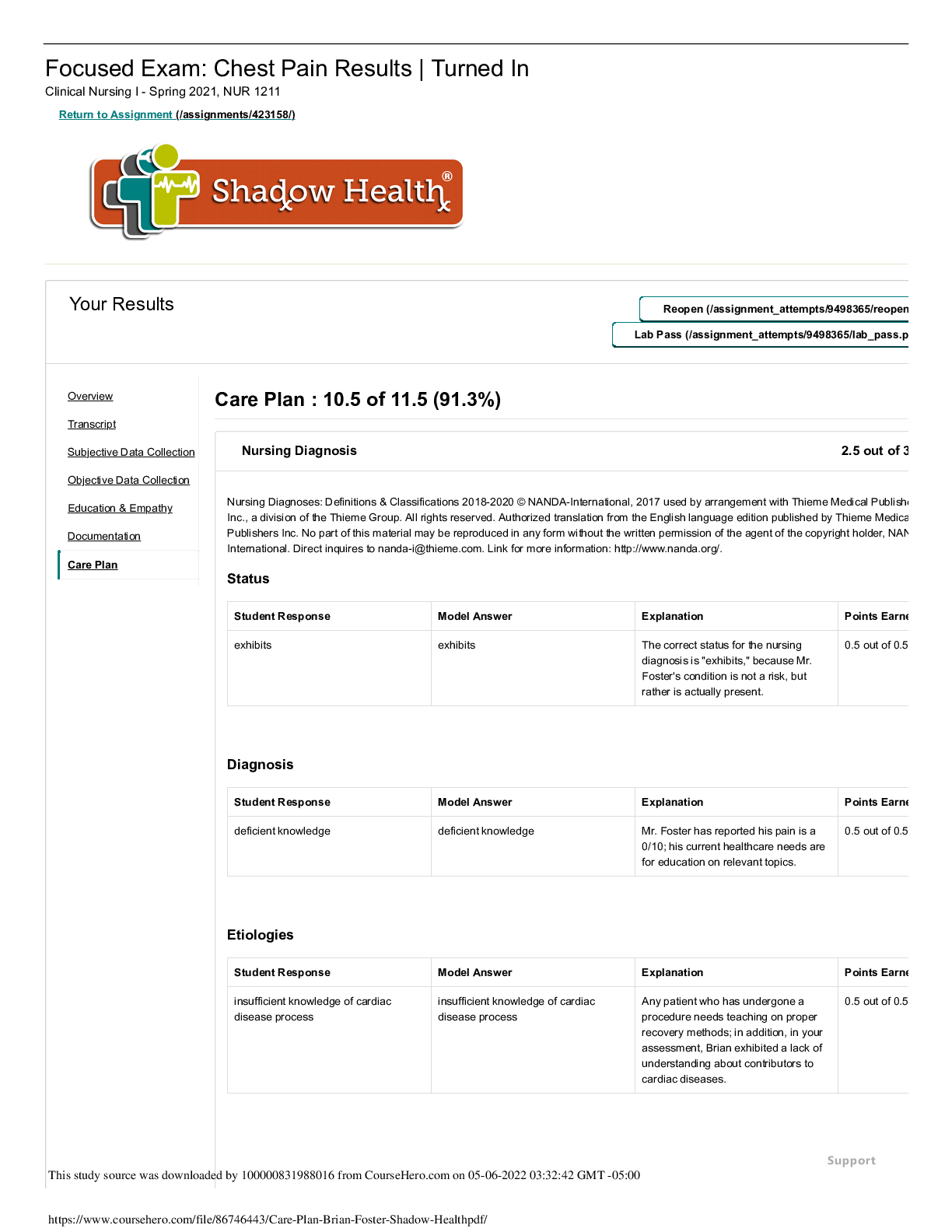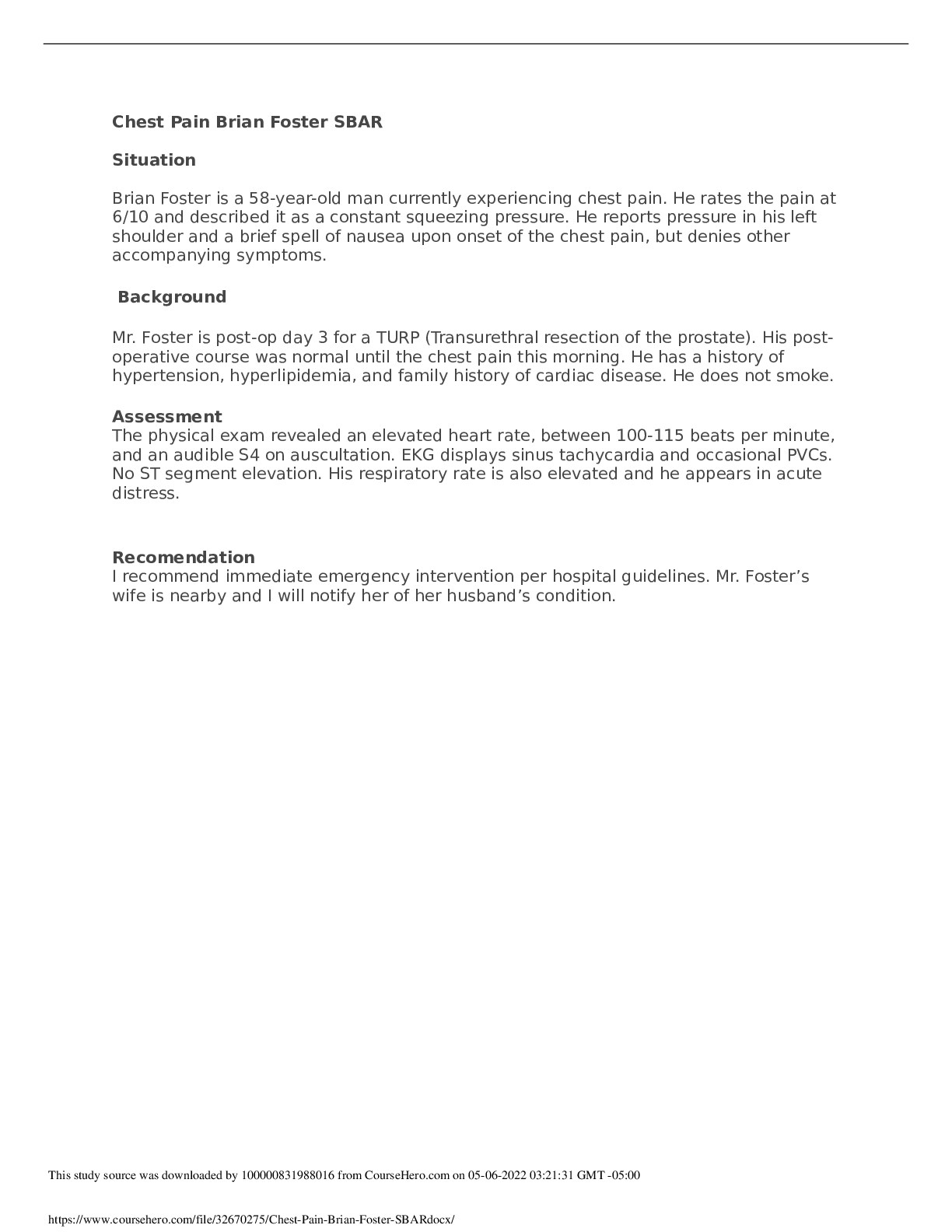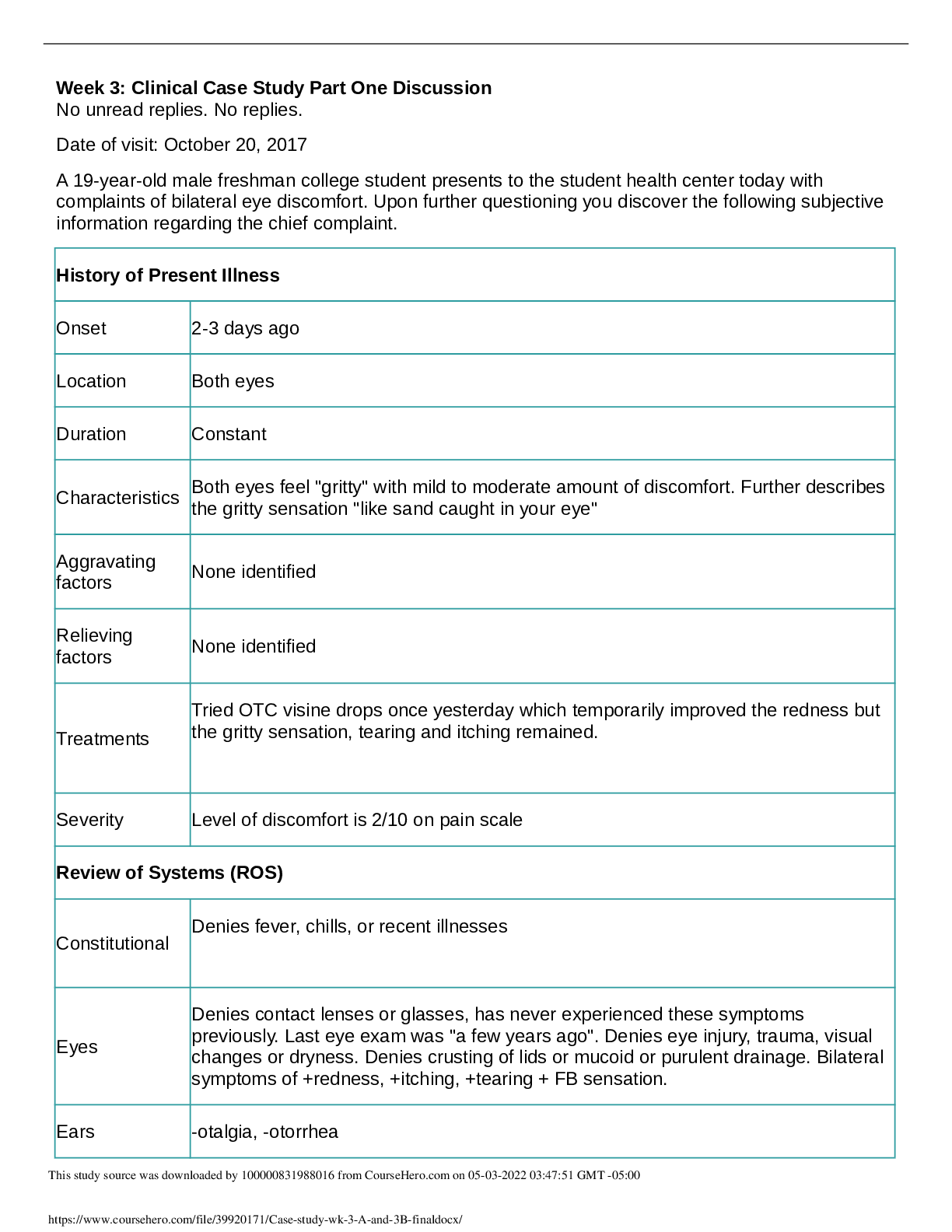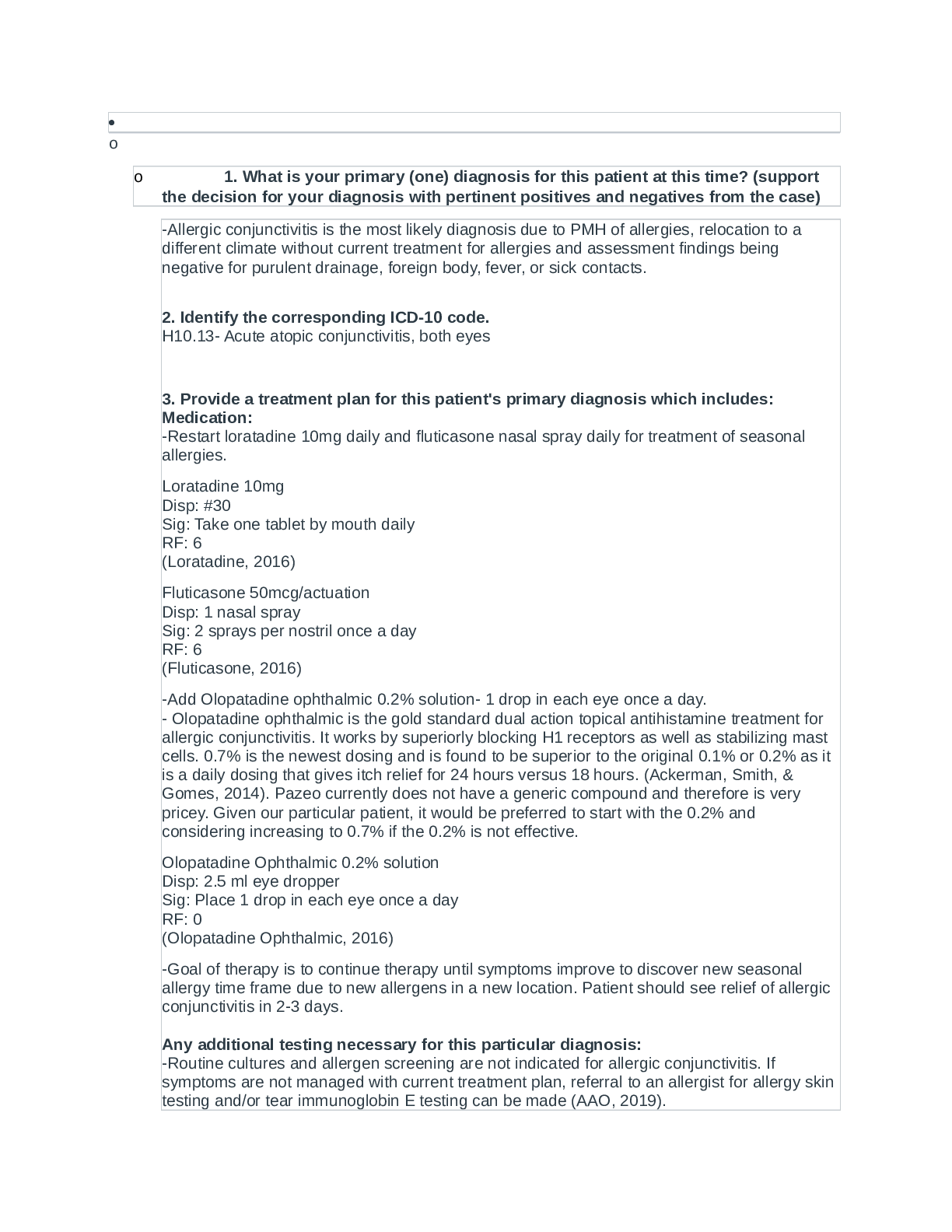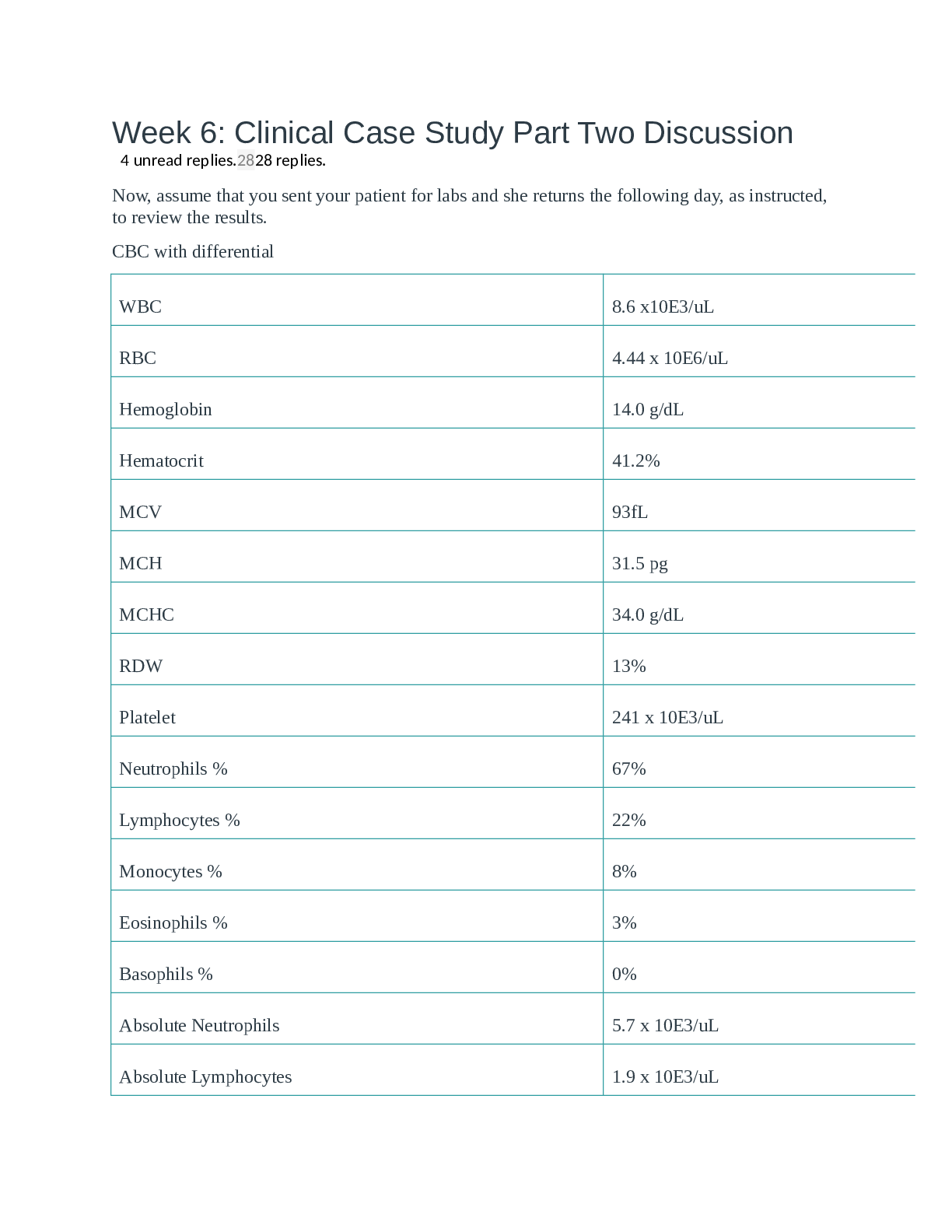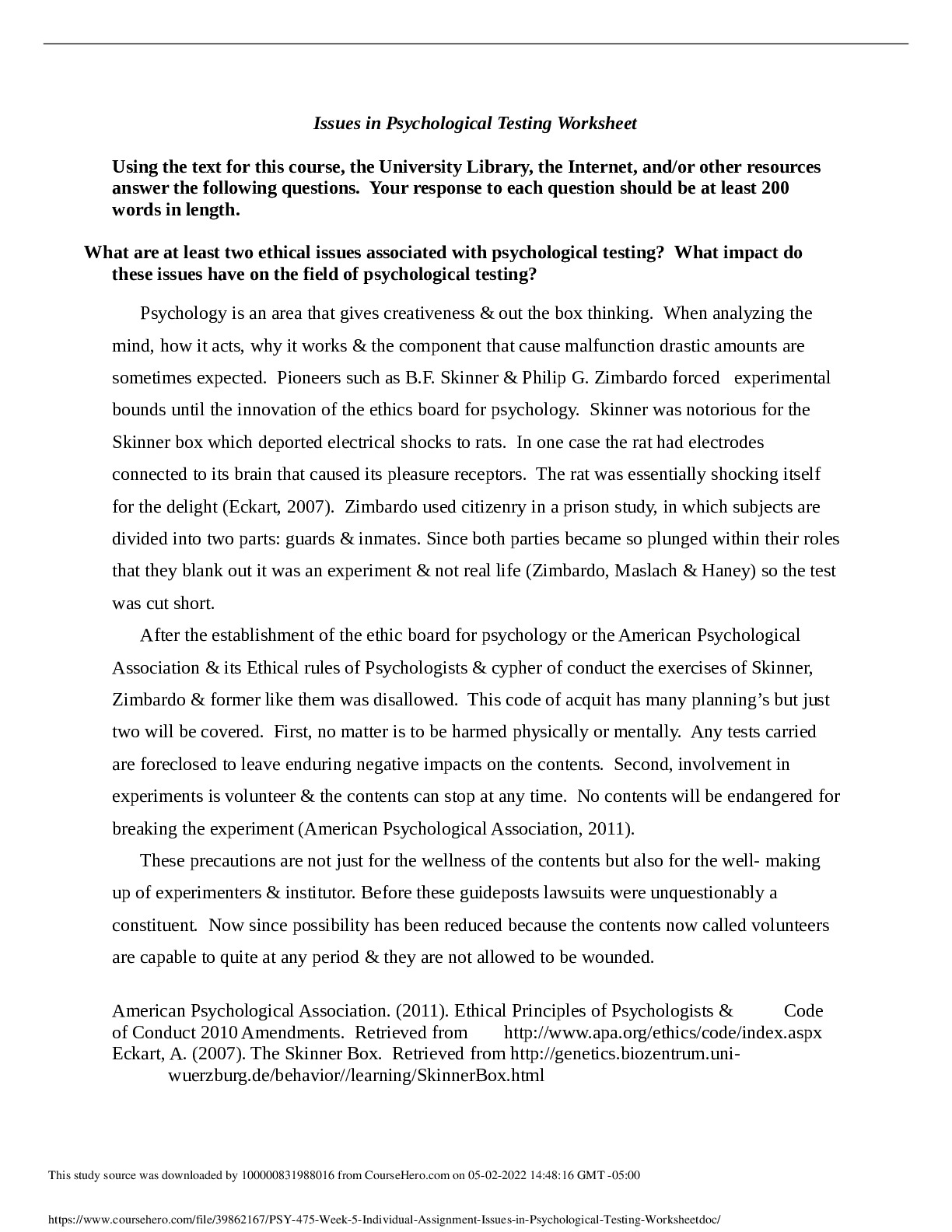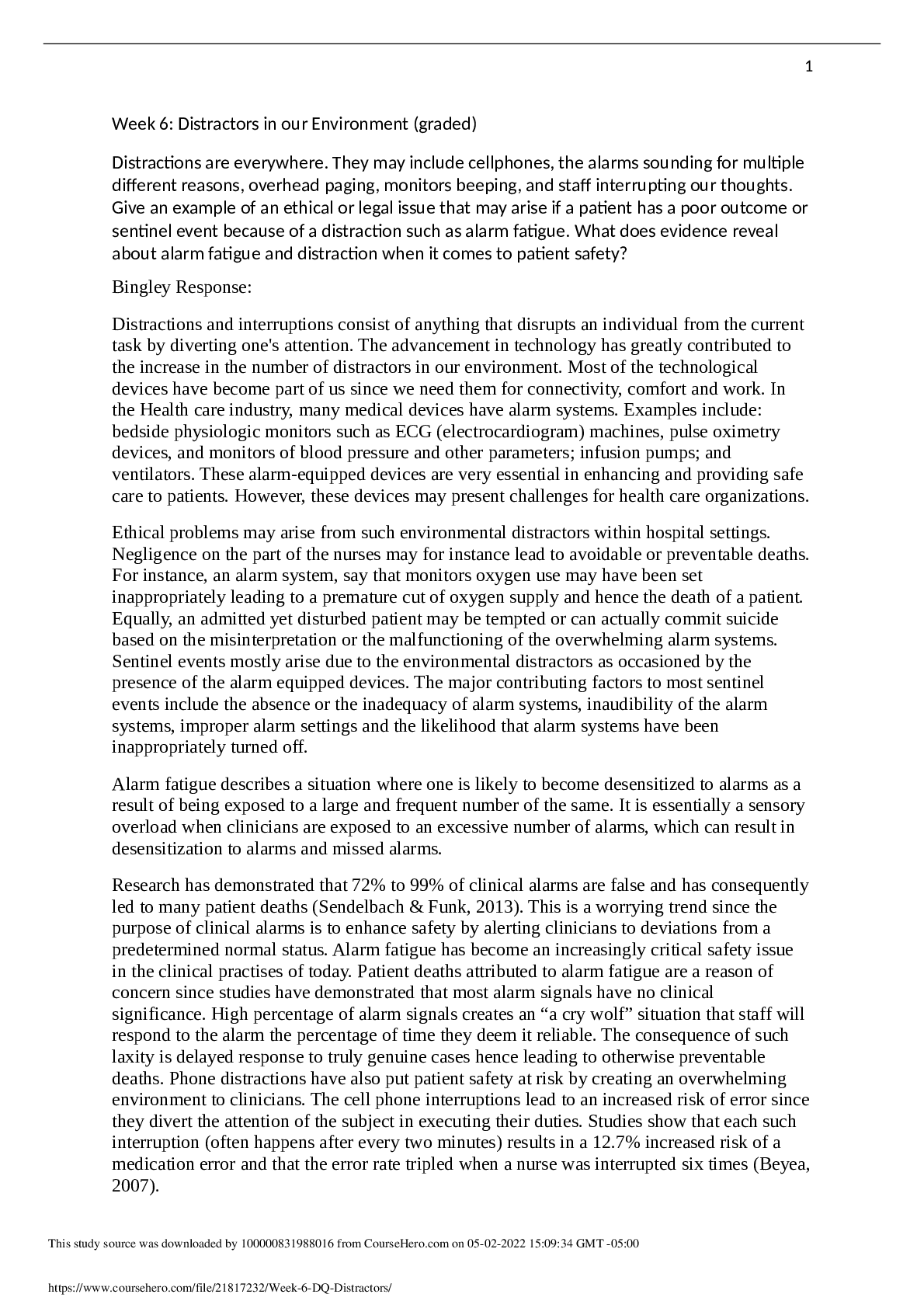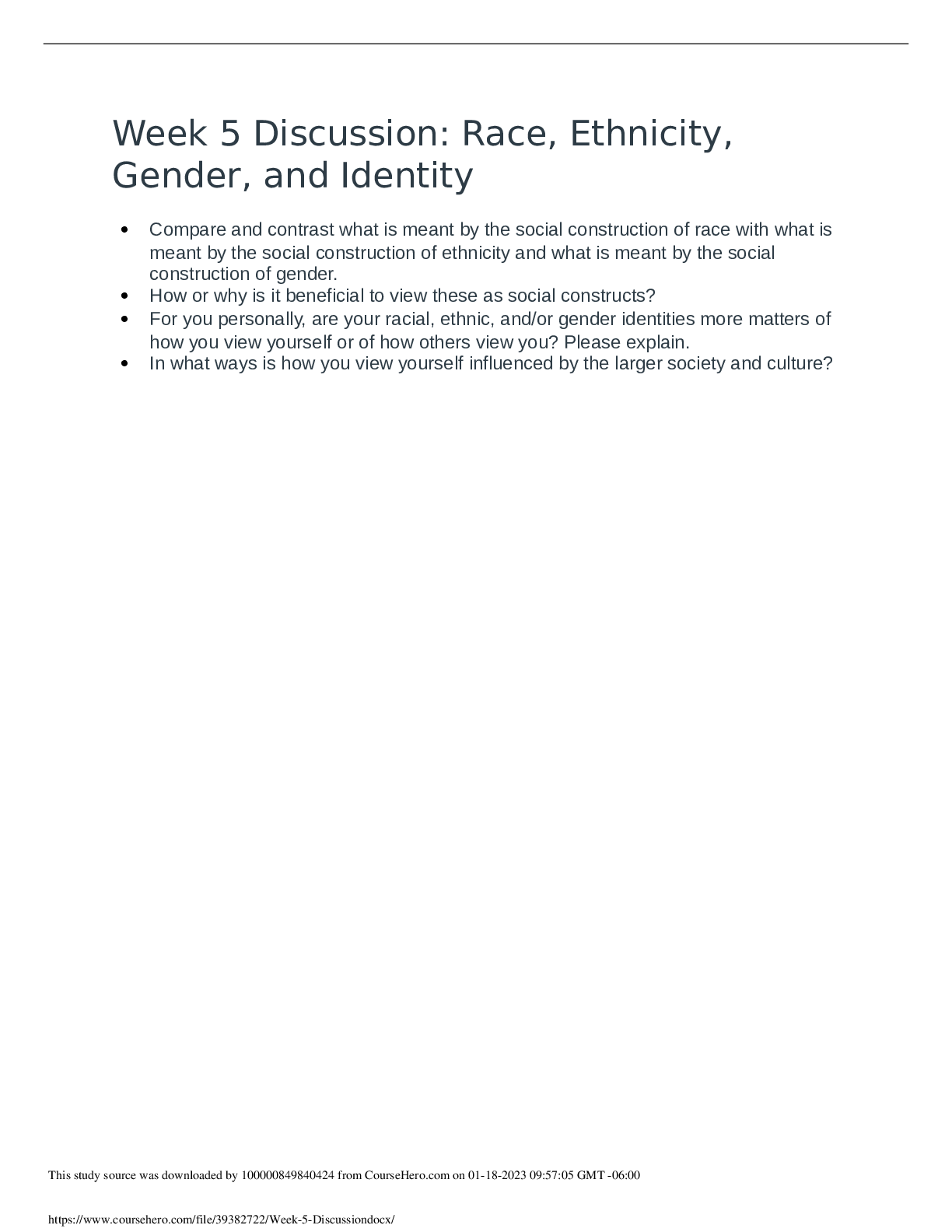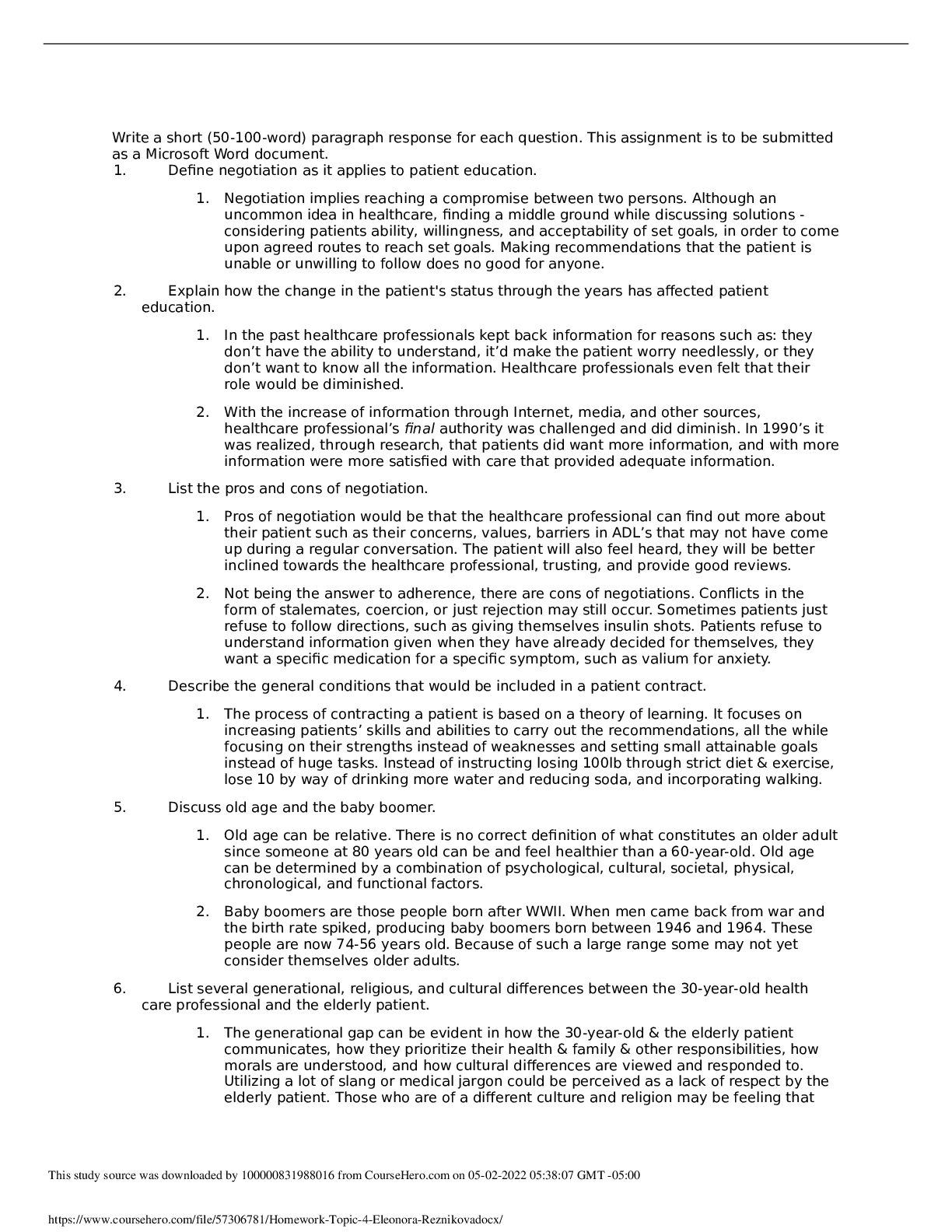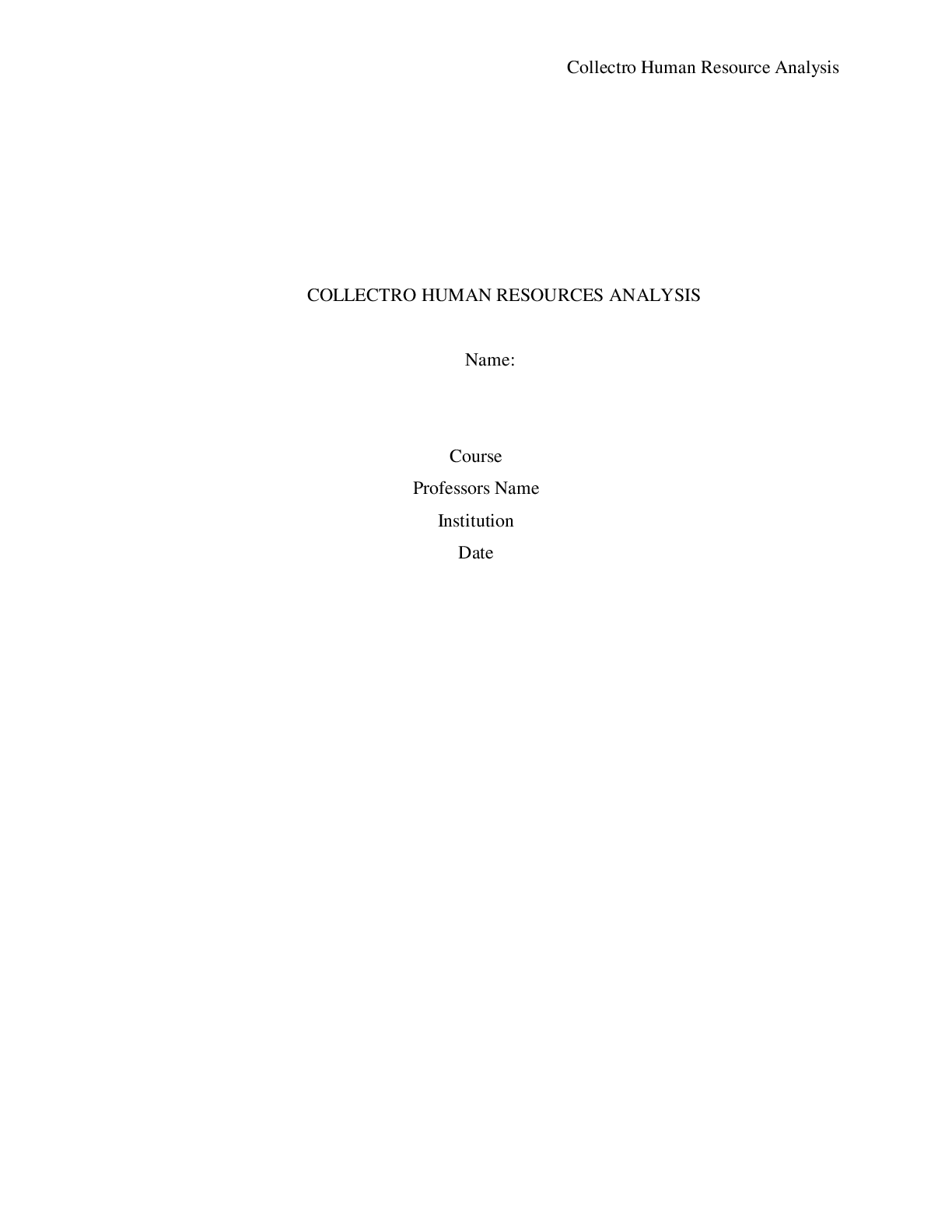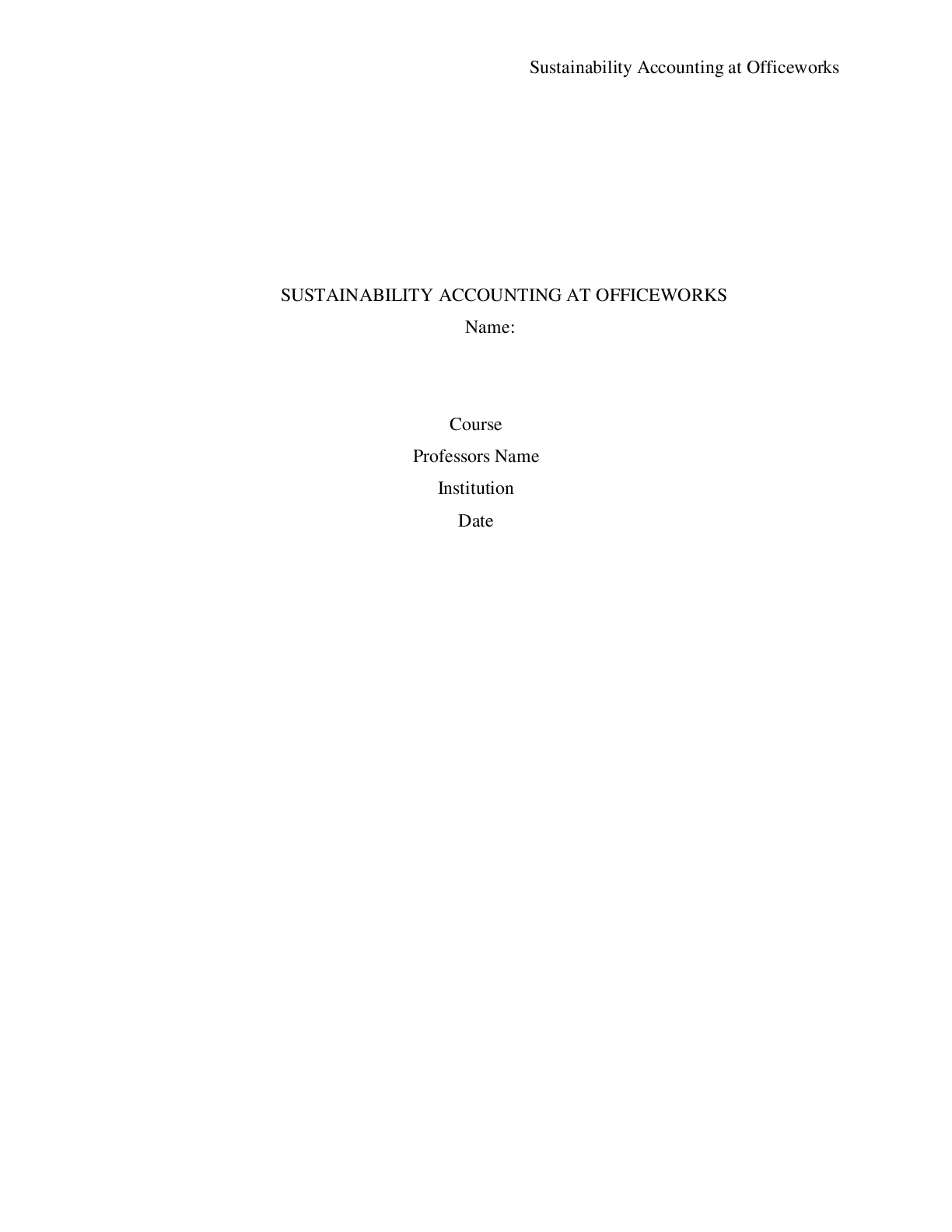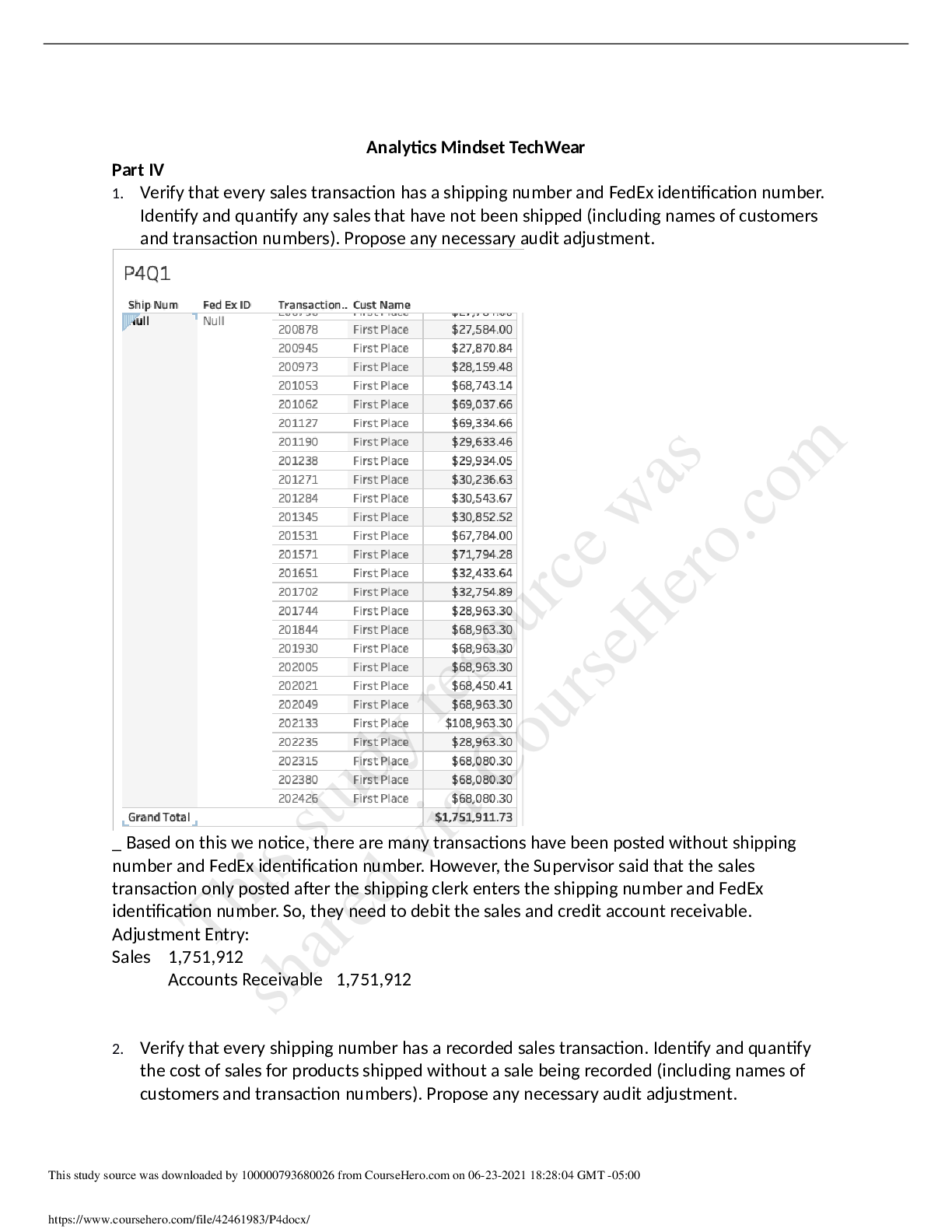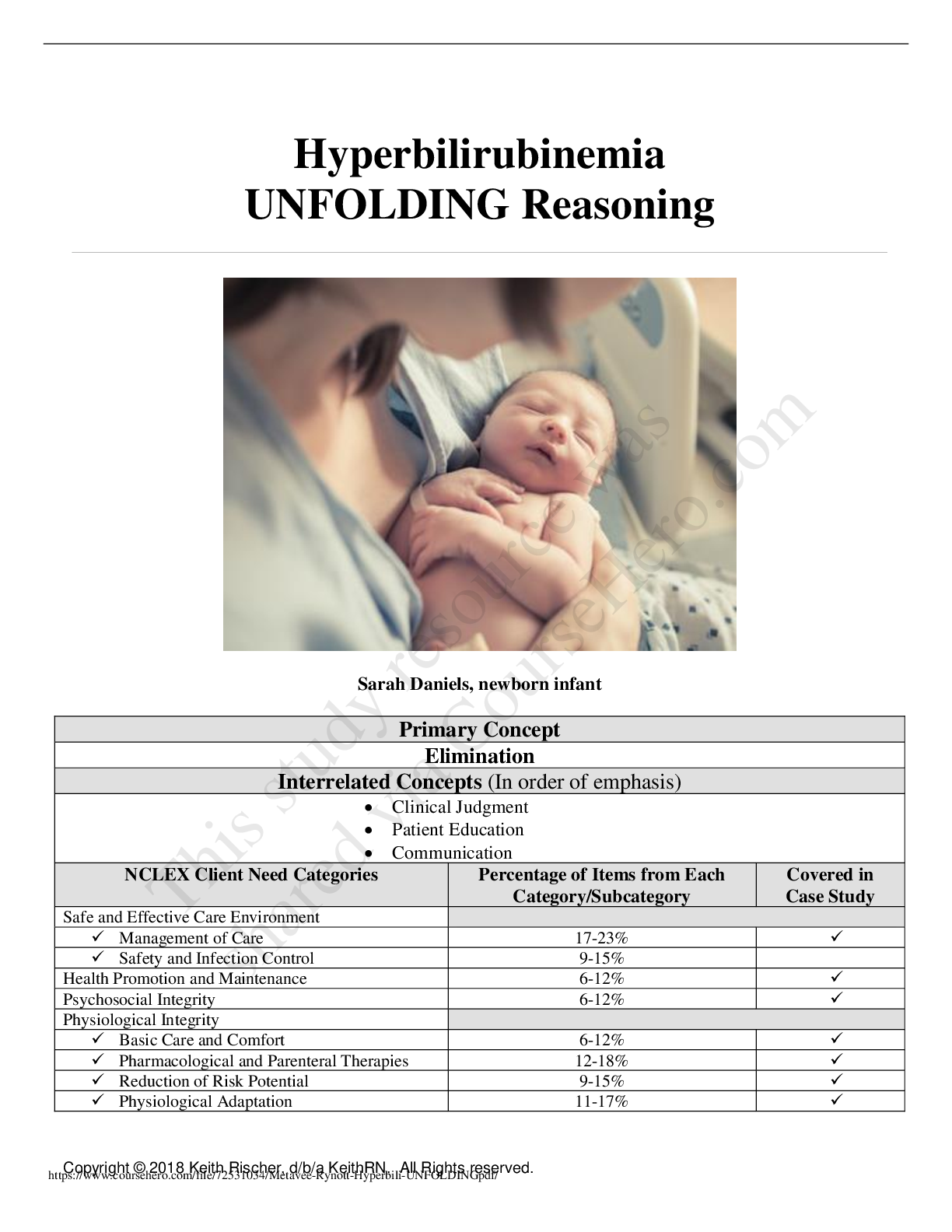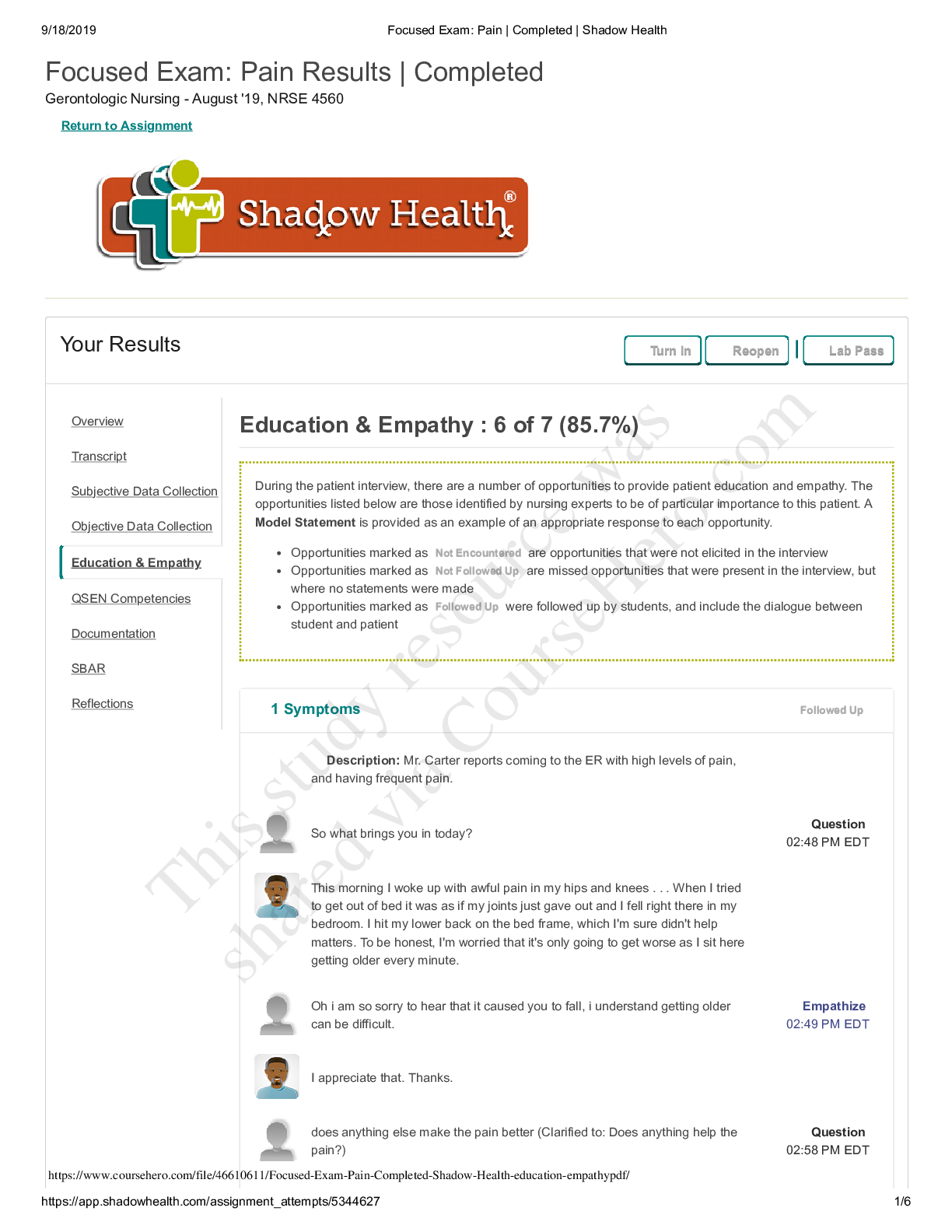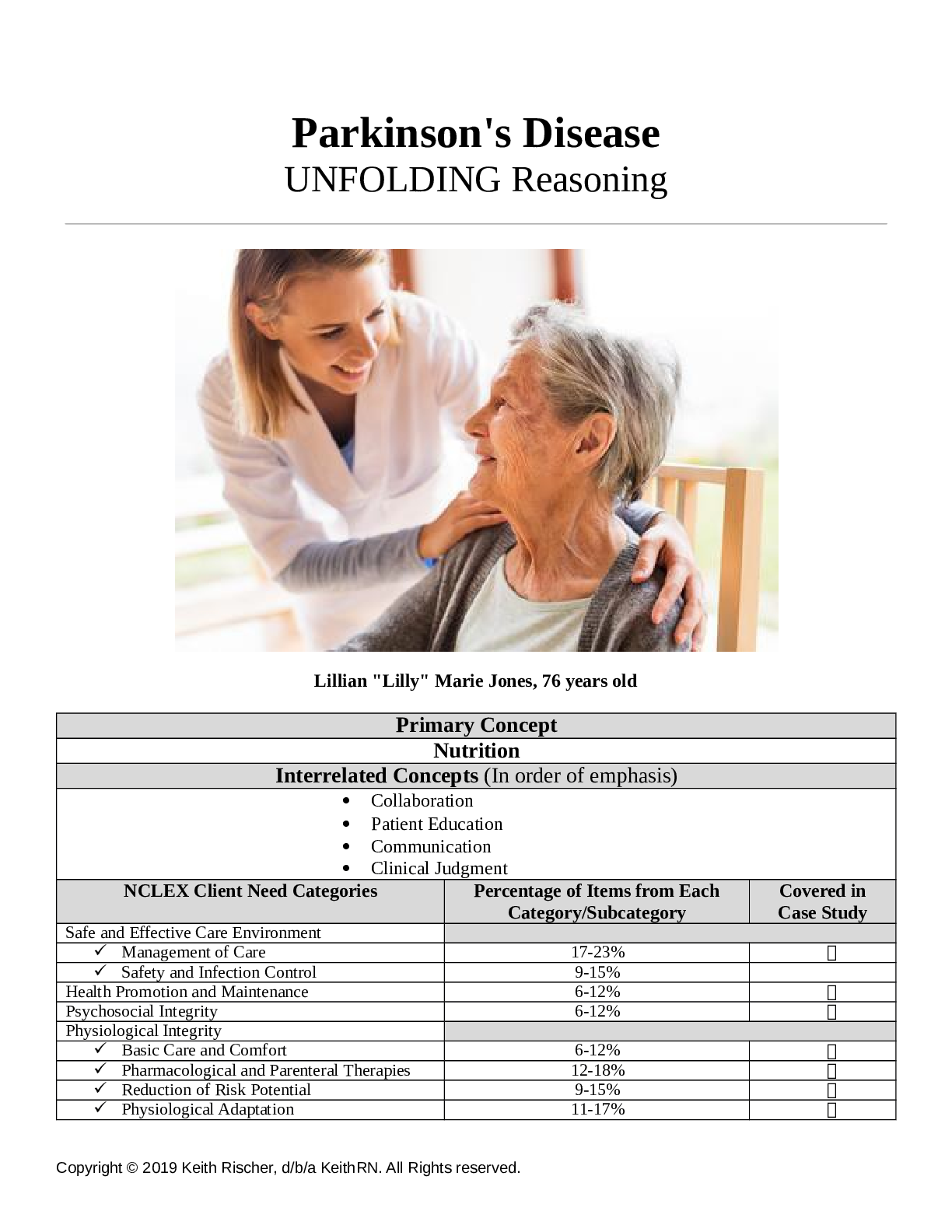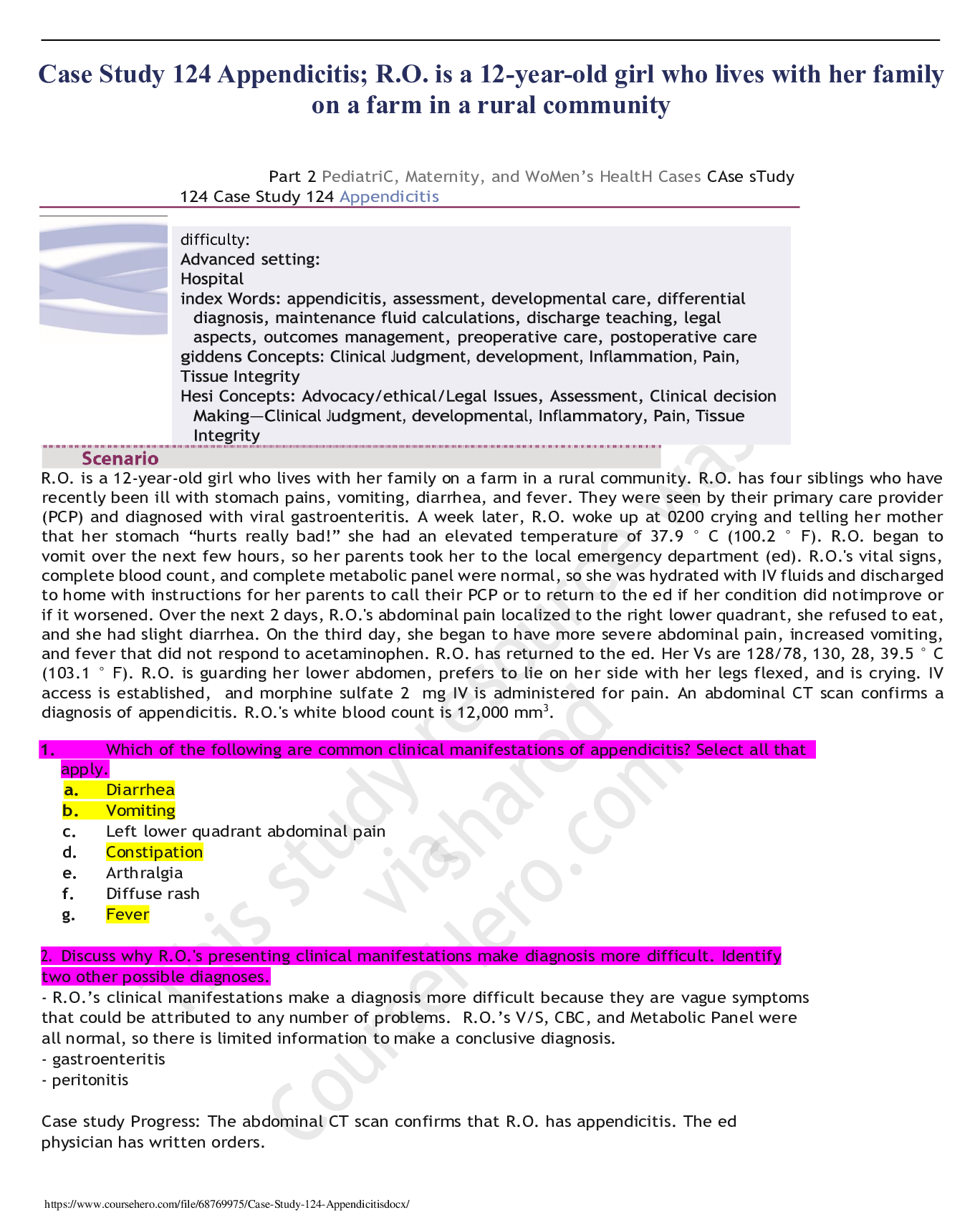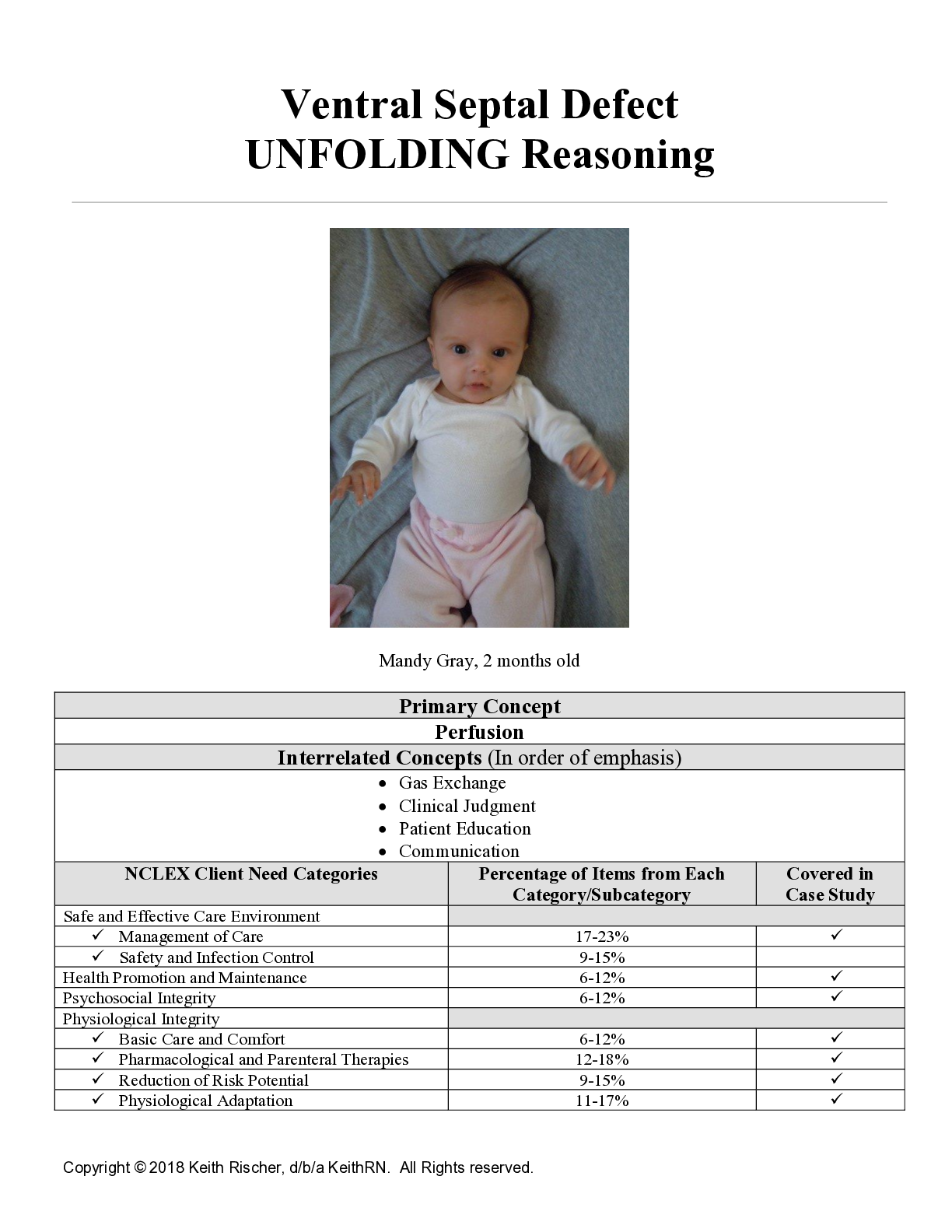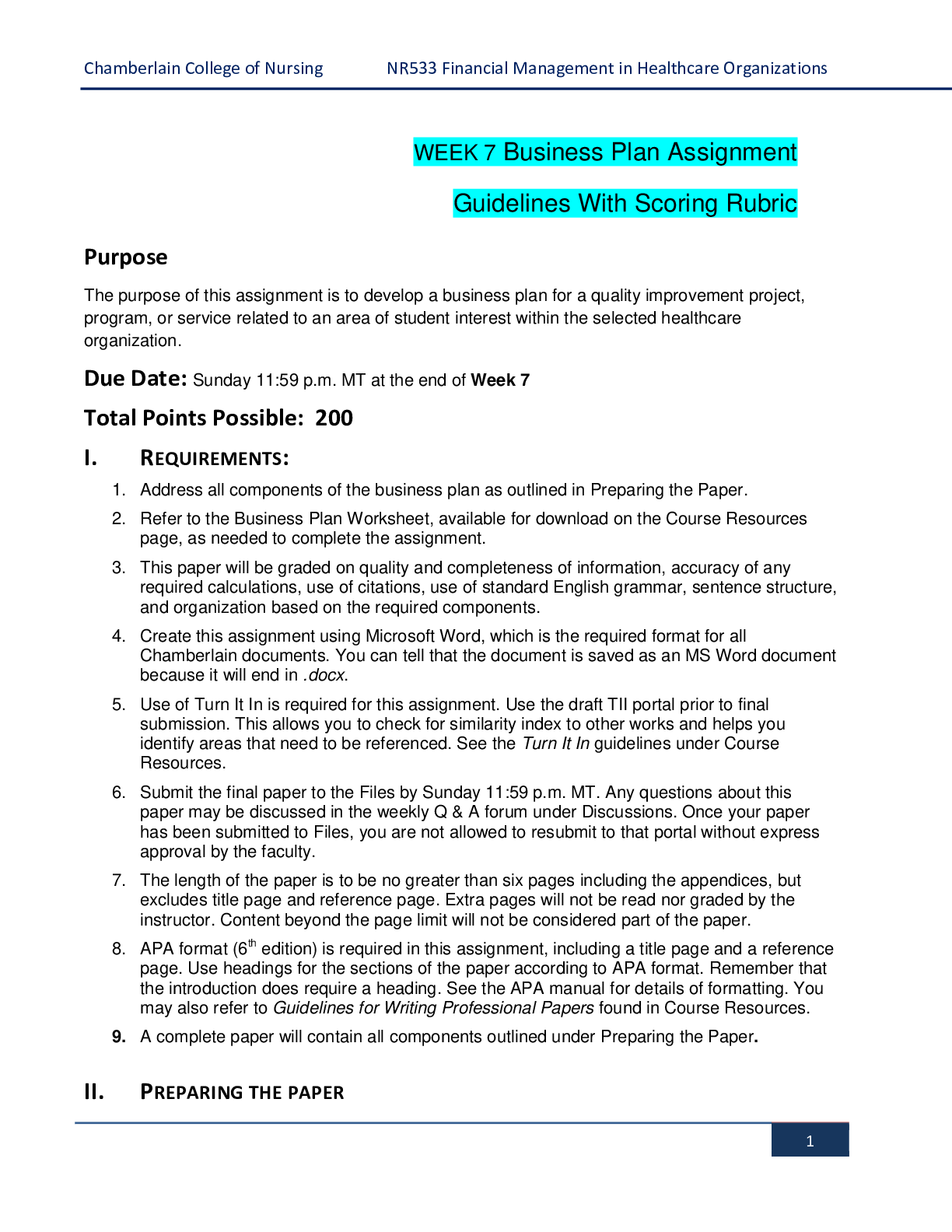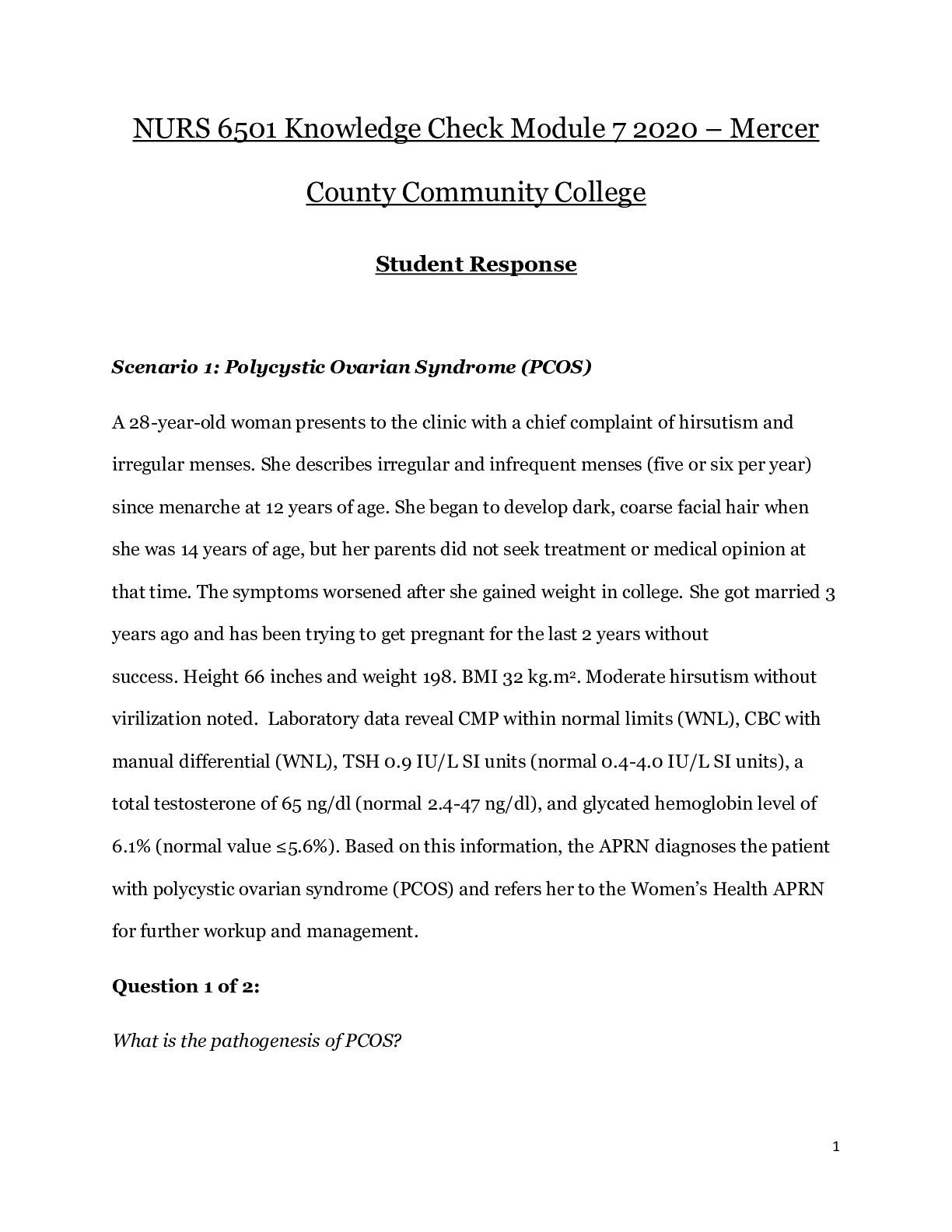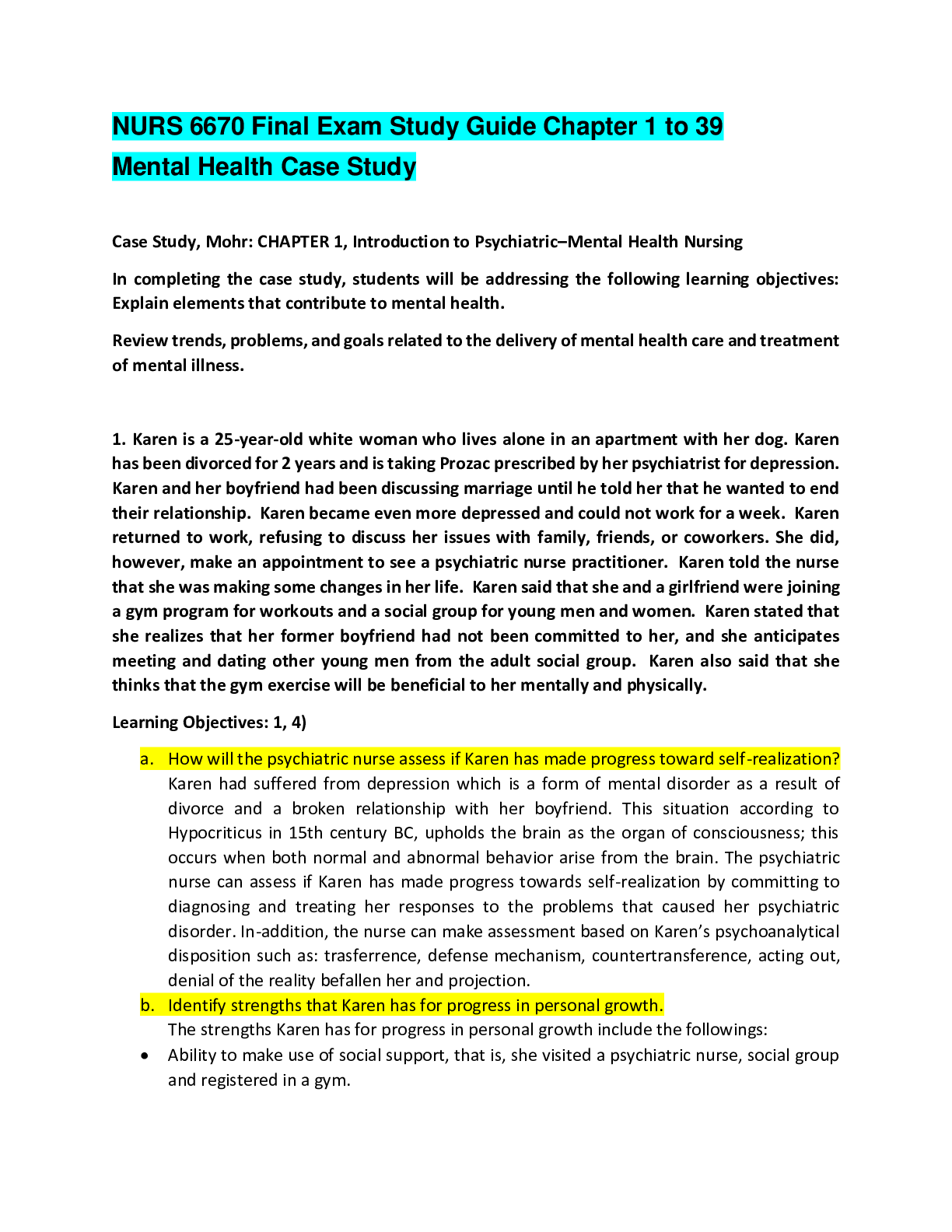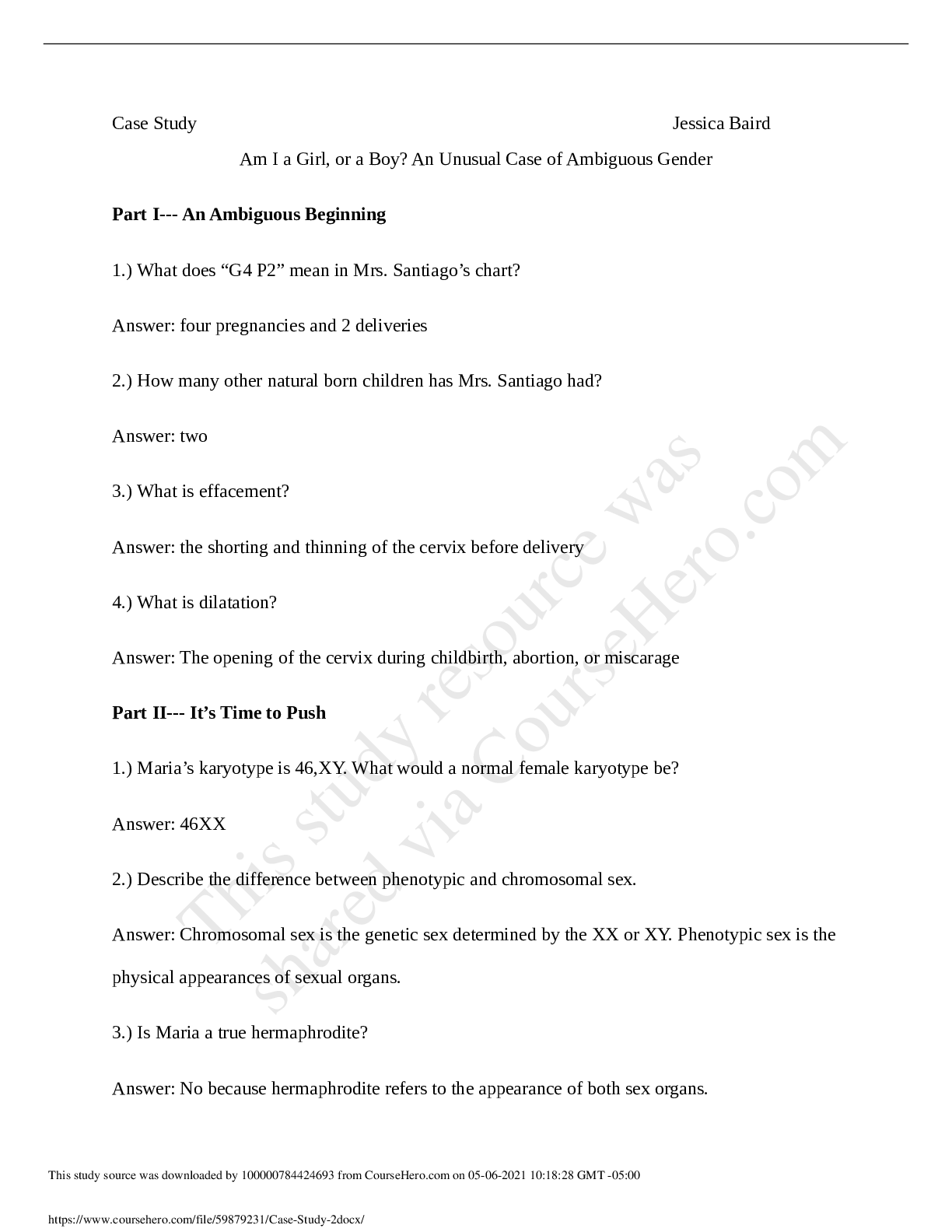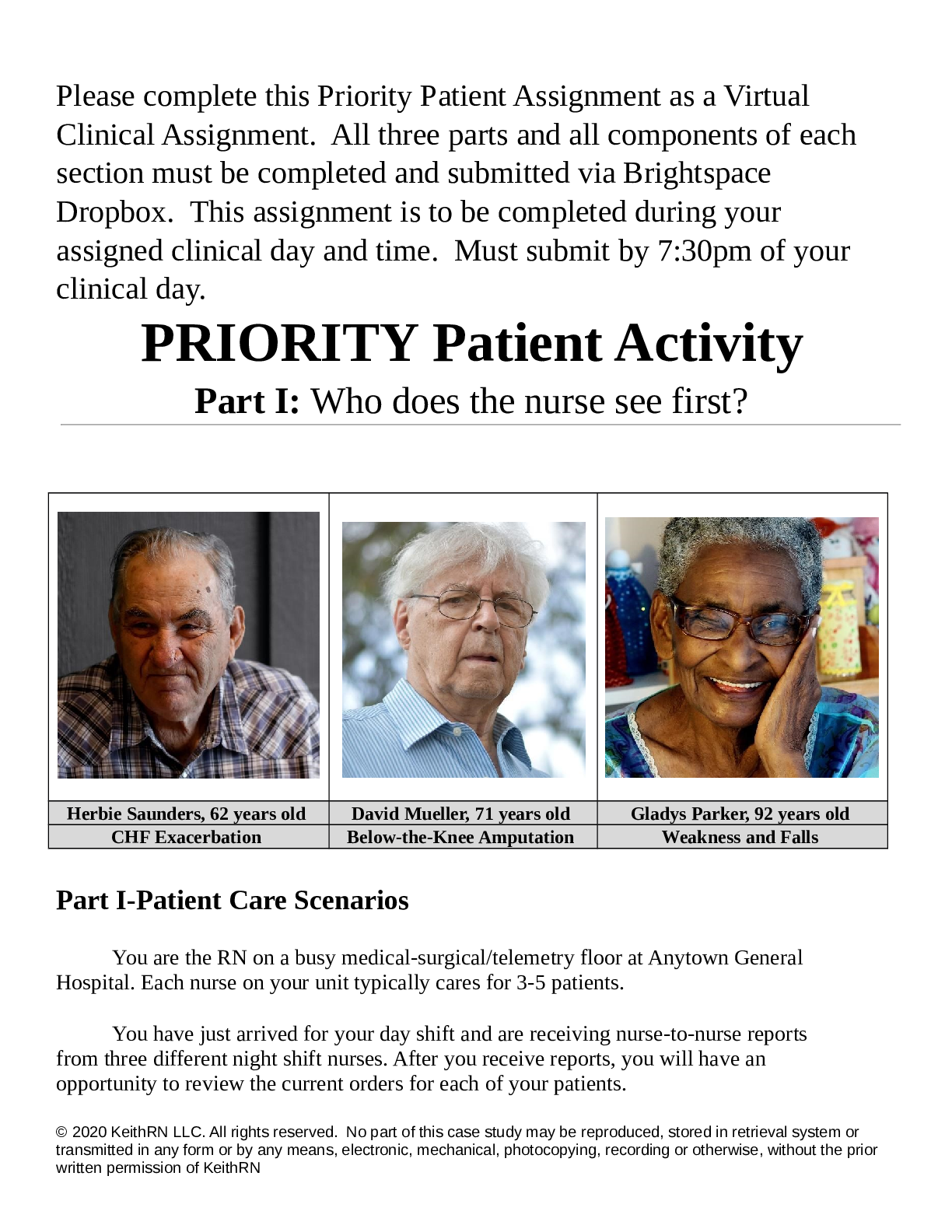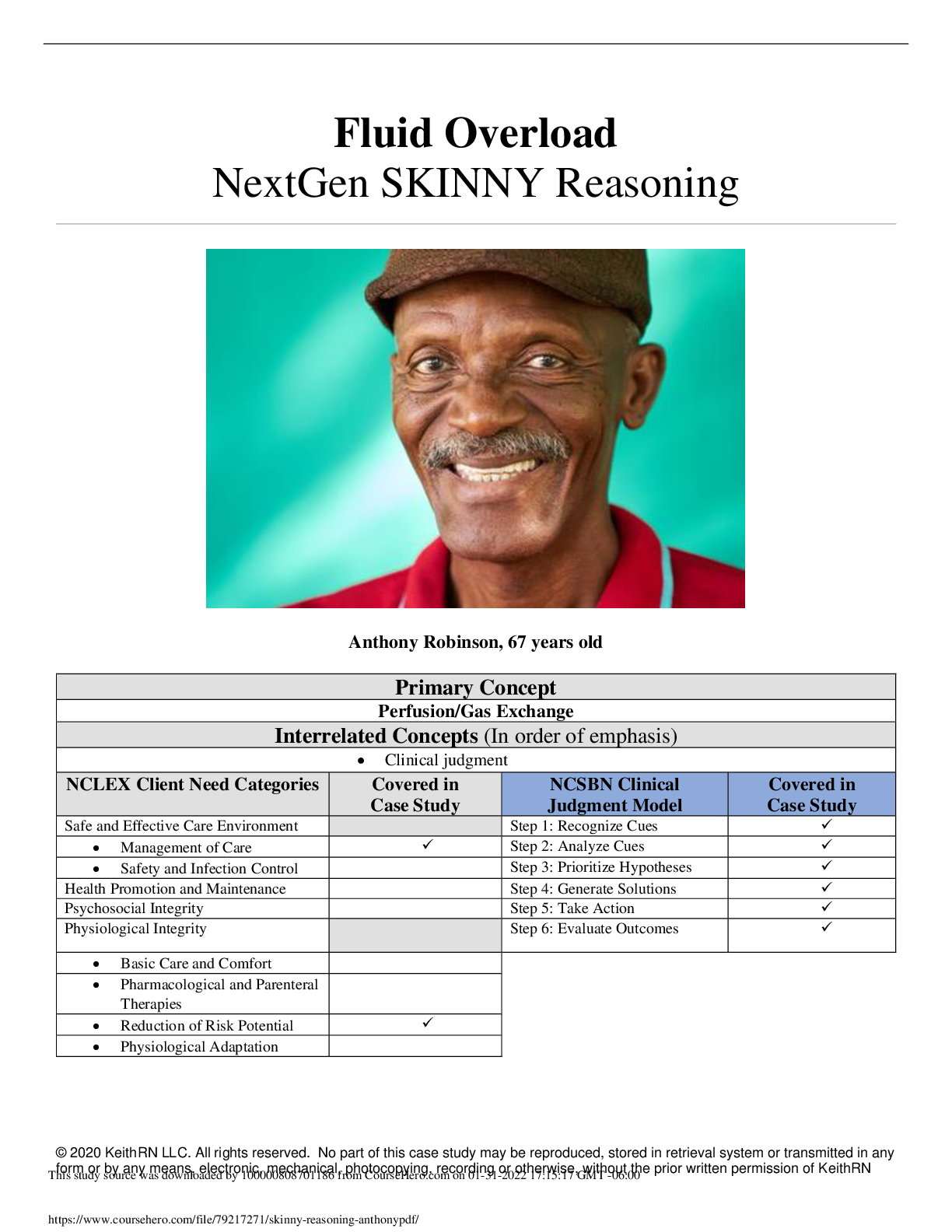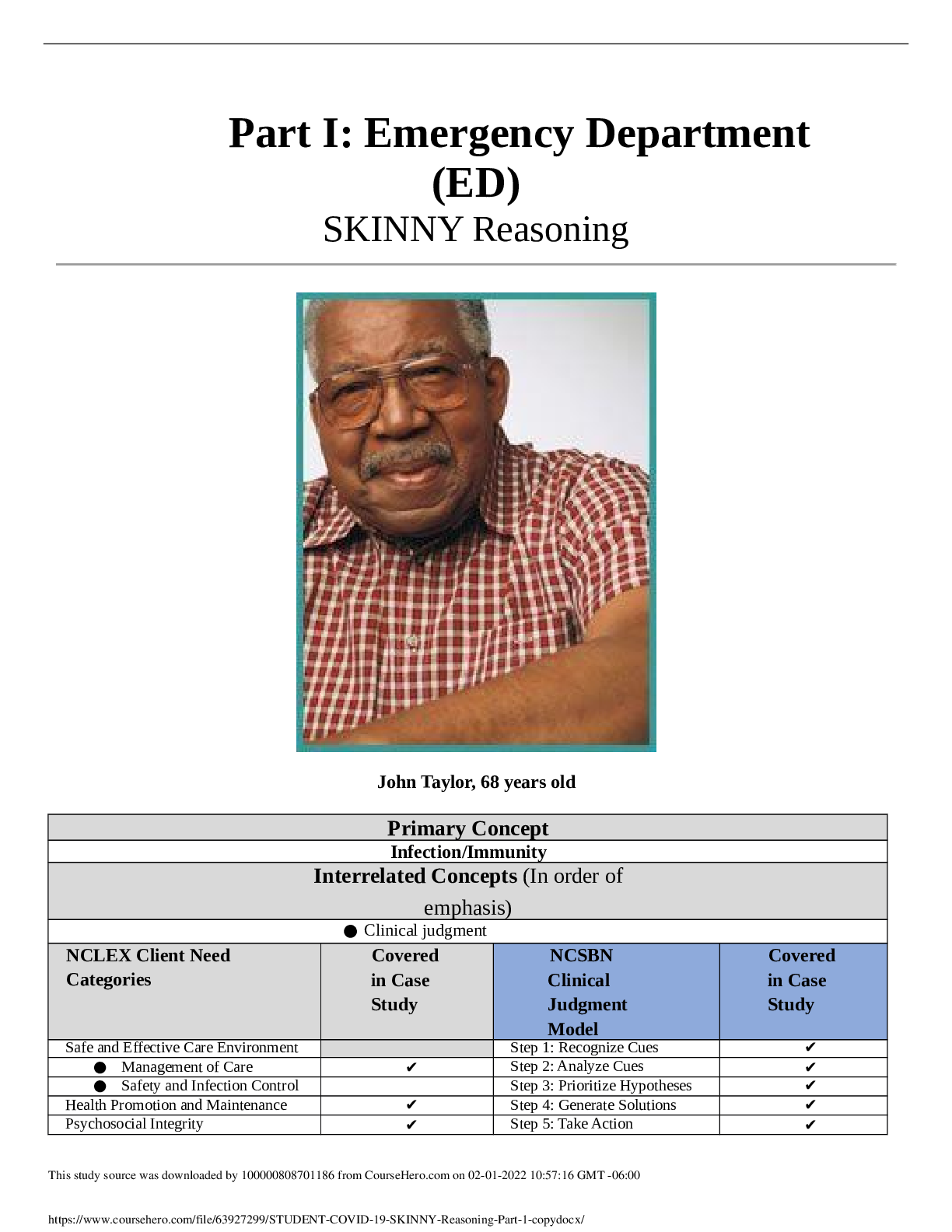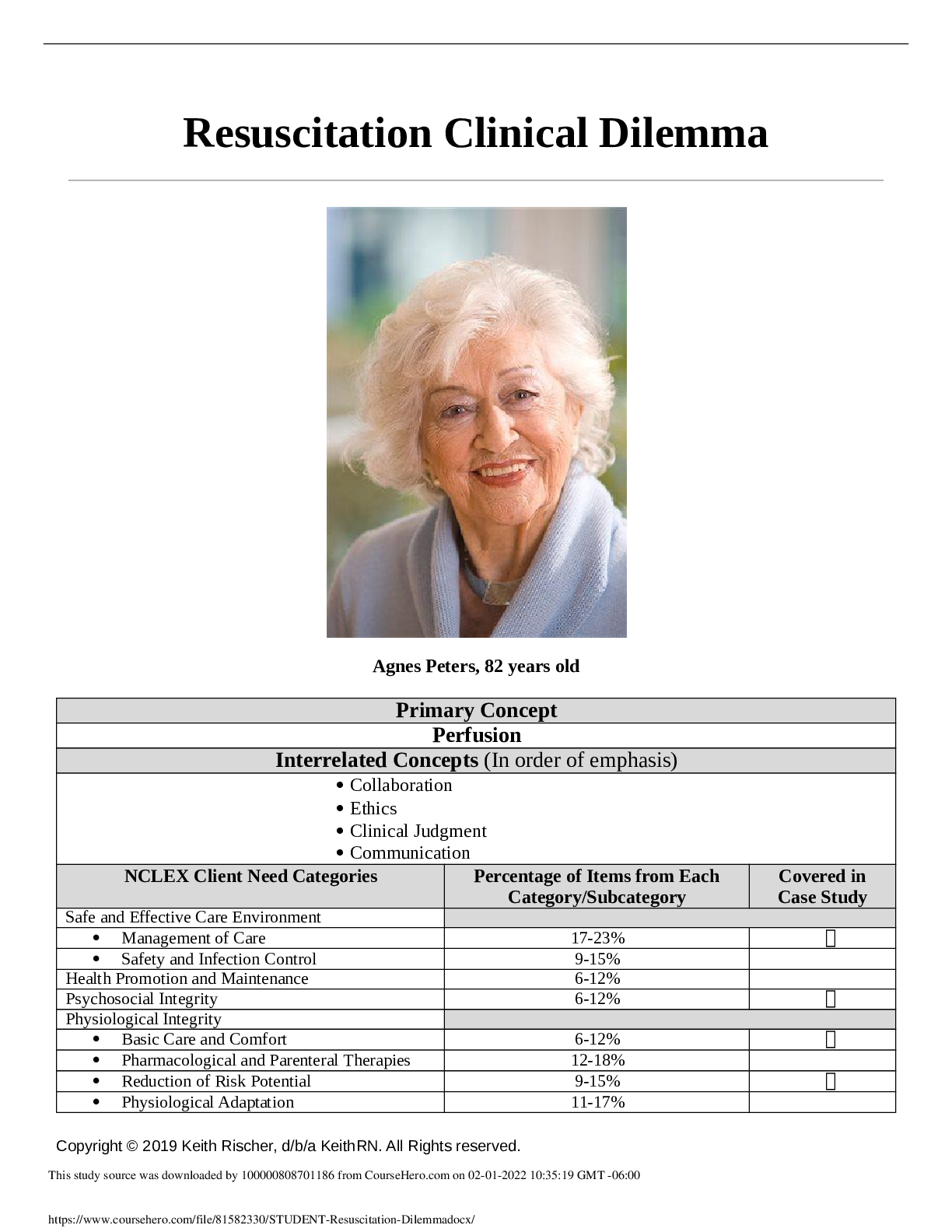*NURSING > CASE STUDY > GCU|HLT 306V WEEK 3 TOPIC 3 ASSIGNMENT, HOMEWORK ANSWERS (All)
GCU|HLT 306V WEEK 3 TOPIC 3 ASSIGNMENT, HOMEWORK ANSWERS
Document Content and Description Below
Yvonne Wallace Homework Topic 3 Advanced Patient Care Sept 16, 2020 Explain multicultural communication and its origins. Multicultural communication describes “a society that contains several c... ultural or ethnic groups, that may live alongside one another, but each cultural group may not necessarily have engaging interactions with each other” (Schriefer, 2016). The purpose of multicultural communication is to bring together relatively unrelated cultural groups to establish a clear understanding of how people from different backgrounds can communicate effectively. Compare and contrast culture, ethnicity, and acculturation. According to Falvo (2011), “culture is the characteristic pattern of attitudes, values, beliefs, and behaviors shared by members of society or population.” It is common that ethnicity and culture are used in adjunction with one another; however, they do not always share the same commonality. Ethnicity is described as “biological and racial; common social and cultural heritage passed on to each successive generation” (Falvo, 2011). This is an important distinction because culture represents a series of specific customs and traditions recognized within a group, but they may not share the same biological make up. This leads to acculturation, “a term related to the individual’s adaptation to the customs, values, and behaviors of a new culture” (Falvo, 2011). This term can aptly describe how those who aren’t raised in the United States or immigrated at a late age, can adapt to American culture. Their culture of origin may be different, even ethnicity, but they can learn and adapt new traditions from other cultures. Explain how cultural and religious differences affect the health care professional and the issues that can arise in cross-cultural communications. Many patients from different cultural or religious backgrounds have experienced both positive and negative healthcare interactions; however, it is the negative experiences that drive how they continue to interact with health care professionals especially if the health care professional exhibits familiar behaviors that trigger defensive responses from the patient. “As a result, health care professionals of a different culture may have difficulty understanding the patients’ apparent hostile or defensive response that will appear to be unjustified” (Falvo, 2011). This create issues with further communication that inhibit any potential teaching opportunities. Discuss family culture and its effect on patient education. Family culture plays a significant role in how patient education is received and adhered to as it relates to preservation of health. According to Falvo (2011), “it is important to consider the influence of family members on the patient’s health behaviors, and to include in patient teaching as appropriate.” The patient’s beliefs and perspectives originate from factors related to home life to include religious or cultural health practices. This can influence how This study source was downloaded by 100000831988016 from CourseHero.com on 05-02-2022 05:31:35 GMT -05:00 https://www.coursehero.com/file/68707715/Homework-Topic-3docx/ the patient will integrate new health information into their lives and how likely the family will support any necessary changes needed to alter their current health status. List some approaches the health care professional can use to address religious and cultural diversity. “Health care professionals must be willing to alter their own behavior, attitudes and communication styles and to examine their own biases and stereotypes” (Falvo, 2011). In addition to self-awareness, the healthcare professional must demonstrate the ability to learn about the different cultures, avoid making assumptions, build trust and rapport, overcome any language barriers using interpreters, and practice active listening. List the types of illiteracy. According to our text (as cited by Irwin, 1991), “literacy is described as the individual’s ability to read, write, and speak English, and compute and solve problems at levels of proficiency necessary to function on the job and in society, to achieve one’s goals and develop one’s knowledge and potential” (Falvo, 2011). There are different types of illiteracy to include functional, informational, cultural, financial, emotional and healthcare illiteracy. Discuss illiteracy as a disab [Show More]
Last updated: 1 year ago
Preview 1 out of 3 pages
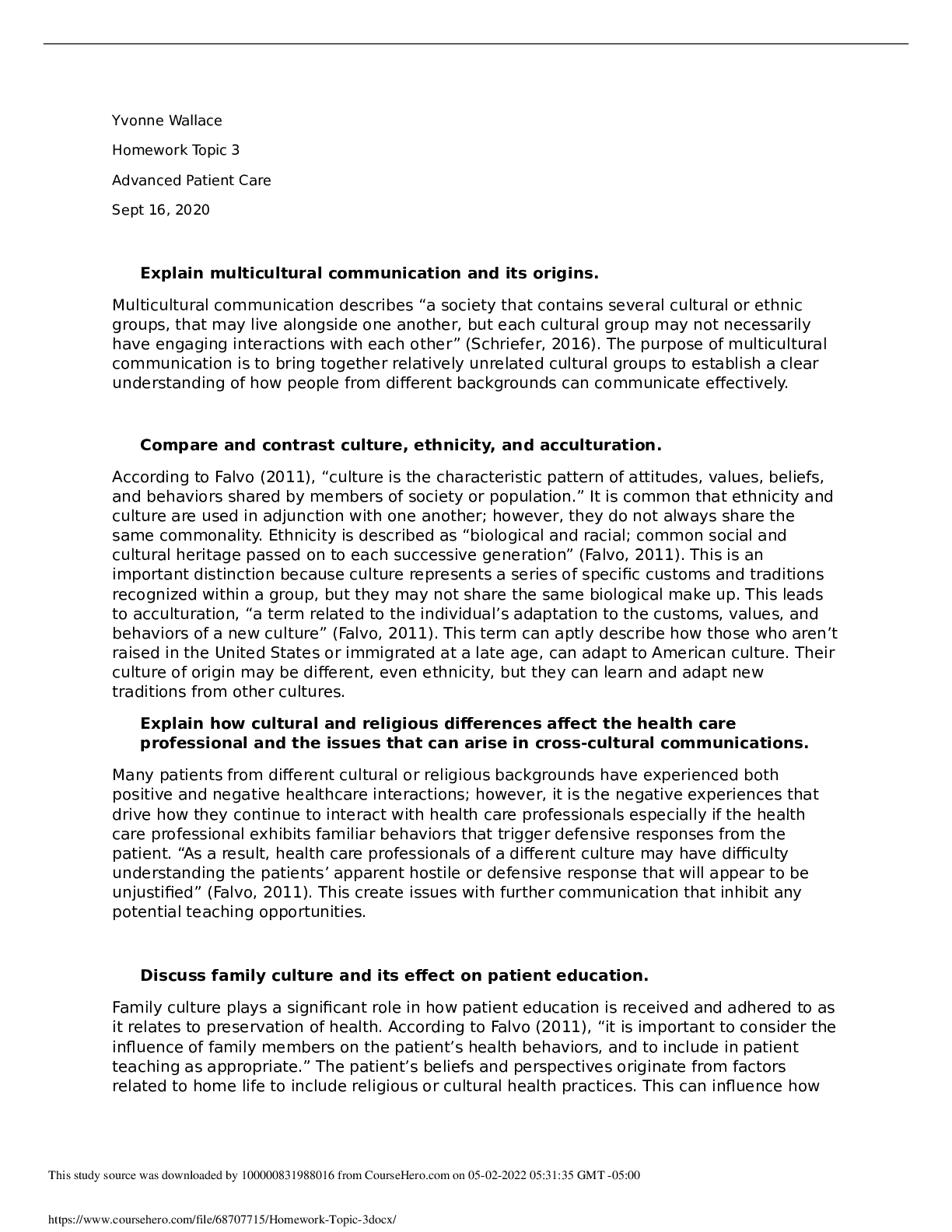
Reviews( 0 )
Document information
Connected school, study & course
About the document
Uploaded On
May 02, 2022
Number of pages
3
Written in
Additional information
This document has been written for:
Uploaded
May 02, 2022
Downloads
0
Views
53

